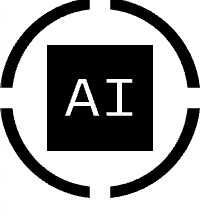
$INIT :How Specific Applications Could Benefit from Initia’s Modular Approach
Gaming DApps (Decentralized Applications)
Requirements: Gaming applications often require high throughput, low latency, and the ability to process numerous transactions per second (TPS) without compromising the gaming experience.
Benefit from Initia: Gaming DApps can deploy their own Minitia (Layer 2 rollup) that is optimized for low latency and high-speed transactions. For example, by using a customized virtual machine (VM) designed for fast transaction validation, they can avoid bottlenecks seen in traditional blockchains.
Example: A game with an in-game economy could use Initia’s EVM for seamless interaction with Ethereum-based assets, while benefiting from the scalability and low transaction costs provided by Initia's Layer 2.
DeFi (Decentralized Finance) Applications
Requirements: DeFi platforms need scalability, efficient transaction processing, and low fees to compete with centralized financial systems.
Benefit from Initia: DeFi platforms could deploy their own Minitia optimized for transaction throughput and smart contract execution. Using EVM-based Minitias could help them integrate easily with existing Ethereum DeFi protocols, while reducing the congestion and gas fees seen on the main Ethereum chain.
Example: A decentralized exchange (DEX) could operate on its own Minitia with an optimized moveVM for better security and faster validation of transactions, connecting with other DeFi protocols across Initia’s ecosystem.
Supply Chain and Enterprise Solutions
Requirements: Supply chain solutions need to track assets, validate transactions securely, and provide transparency while handling large datasets and cross-border transactions.
Benefit from Initia: With Initia, an enterprise can deploy a custom rollup that supports privacy features, like private transaction proofs (using WasmVM for example). This allows businesses to track assets without revealing sensitive data on the public chain.
Example: A company can use Initia to deploy a private, customizable Minitia that integrates with various blockchains and provides secure, real-time supply chain updates. This would reduce reliance on centralized databases and increase trust among stakeholders.
NFTs (Non-Fungible Tokens) and Digital Collectibles
Requirements: NFT platforms need to manage asset ownership, minting, and trading, often with the ability to handle high traffic and provide seamless interactions.
Benefit from Initia: NFT platforms can benefit from Minitias designed for low-cost minting and faster transaction finality, while still interacting with Ethereum’s vast NFT ecosystem via EVM-based rollups.
Example: A platform that mints and sells NFTs could use a custom Minitia with EVM support, ensuring compatibility with Ethereum’s standards while reducing transaction costs and congestion on the main Ethereum network.
Privacy-Focused Applications
Requirements: Privacy apps need secure transactions and the ability to anonymize user data while maintaining a decentralized, verifiable system.
Benefit from Initia: Privacy-focused applications can leverage Minitias that are tailored to privacy features, such as zk-SNARKs or confidential transactions, to ensure that sensitive data is not exposed while ensuring the integrity of the transaction process.
Example: A privacy-focused messaging app could build on Initia’s customizable rollups with privacy layers integrated into the WasmVM, enabling encrypted messaging that ensures transaction anonymity.
Deploying a Minitia (Step-by-Step Process)
Deploying a Minitia on Initia involves creating a custom rollup that operates within Initia’s modular multichain ecosystem. Here’s a simplified process for developers who are looking to deploy their own Minitia:
Step 1: Define Your Rollup’s Purpose
Identify Use Case: The first step is to define what your Minitia will do. Are you building a DeFi platform, a gaming application, a privacy-focused app, or a cross-chain bridge?
Select Virtual Machine: Choose the VM (EVM, WasmVM, MoveVM) that best fits your needs. If you want compatibility with Ethereum, EVM is ideal; if you want advanced privacy features, WasmVM might be better.
Step 2: Set Up the Infrastructure
Node Setup: You’ll need to set up the necessary infrastructure to run the node for your Minitia. This includes configuring the server, ensuring you have enough computational power to handle the transactions, and setting up a reliable data availability layer.
API Integration: Integrate any external APIs or services that your Minitia needs (e.g., price feeds for DeFi, or random number generation for gaming apps).
Step 3: Code the Smart Contracts
Write Smart Contracts: Depending on your platform, you will write smart contracts for your Minitia to manage assets, user interactions, and other important functionality.
Testing: You’ll want to thoroughly test your contracts in a testnet environment before moving to mainnet. Initia offers a sandbox or testnet for deploying your contracts in a safe environment.
Step 4: Deploy Your Rollup
Launch Your Minitia: Once the infrastructure is set up and smart contracts are written and tested, you can deploy your rollup to Initia’s mainnet.
Connect to the Main Layer 1: Ensure your Minitia is connected to Initia’s Layer 1 for security and consensus. Your rollup will rely on this to ensure its integrity and performance.
Step 5: Monitor and Optimize
Monitor Network Health: Once live, keep an eye on your Minitia’s performance. Monitor transaction speeds, gas usage, and any potential bottlenecks.
Optimize: If you identify areas where your Minitia can be optimized for performance or cost, you can make changes to the rollup configuration and smart contracts to improve efficiency.
Step 6: Interaction and Governance
User Interaction: Users will interact with your Minitia via a unified account system, paying transaction fees in the Initia ecosystem’s native currency.
Governance: Depending on your Minitia’s setup, you may allow users to vote on certain protocol changes or improvements.
In Conclusion
Deploying a Minitia within Initia's modular multichain ecosystem allows you to leverage the power of customizable, scalable, and secure rollups tailored to your application’s specific needs. Whether you're building a DeFi platform, gaming DApp, or privacy application, Initia’s flexibility and interoperability ensure your project can scale without compromising on security or performance.

$INIT :Modular Multichain Architecture and its Relevance to Initia
What is Modular Multichain Architecture?
Modular multichain architecture refers to a system where the blockchain’s structure is separated into different layers or modules, each responsible for a specific function (such as consensus, execution, or data availability). This contrasts with monolithic blockchains (like Bitcoin or Ethereum), where a single chain handles all operations—such as transaction processing, smart contract execution, and consensus.
The idea behind modularity is that specialized chains (or "modules") can be optimized for specific tasks, resulting in better scalability, flexibility, and interoperability. It allows blockchains to focus on what they do best while connecting and interacting with other chains to form a larger, cohesive ecosystem. In a multichain setup, different chains can operate independently but still interconnect seamlessly.
Initia’s Approach to Modular Multichain Architecture
Initia’s approach takes modularity a step further by incorporating Layer 1 and Layer 2 technologies into a unified multichain ecosystem. Here’s how Initia utilizes modular multichain architecture:
The Concept of Minitias:
Minitias are customizable rollups (Layer 2 chains) that can support multiple virtual machines (VMs), such as EVM (Ethereum Virtual Machine), MoveVM (used by Diem/Libra), and WasmVM (WebAssembly). These rollups, or appchains, are tailored to specific applications and use cases, allowing for fine-grained control over how they operate and interact with other chains.
This modular design ensures that developers can deploy application-specific chains that meet their needs, whether it's optimizing for speed, cost, or privacy.
Unified Account and Gas System:
One of the core features of Initia's multichain design is a unified account system. This system simplifies the user experience by allowing a single account to interact seamlessly across multiple chains (Minitias) without needing to manage separate accounts or tokens for each chain.
Likewise, the unified gas system ensures that users can pay for transactions in a consistent manner, regardless of which chain they’re interacting with, streamlining the user experience and reducing complexity in cross-chain transactions.
Interoperability and Seamless Communication:
The architecture of Initia is designed to ensure that different Minitias can communicate and interoperate easily. Whether it’s an EVM-based chain interacting with a WasmVM chain or exchanging assets between different rollups, Initia’s modularity supports cross-chain interactions, making the ecosystem more connected and robust.
This removes some of the silos that exist in other blockchain ecosystems, where interoperability can be a pain point, limiting how dApps and services can interact across different networks.
Layer 1 & Layer 2 Integration:
Initia blends Layer 1 and Layer 2 technologies, allowing for scalability and customization. Layer 1 provides the security and decentralization needed for the overall ecosystem, while Layer 2 solutions (Minitias) offer scalability and performance benefits, allowing specific applications to run more efficiently.
This combination results in a system where both base-layer and application-specific chains can thrive, with security provided by the Layer 1 network and scalability ensured by the Layer 2 rollups.
Advantages of Initia’s Modular Multichain Approach
Scalability and Performance:
By separating the execution and consensus layers into specialized chains, Initia can avoid bottlenecks common in traditional monolithic blockchains. Applications can scale independently without burdening the main chain, which is key to supporting a large number of decentralized applications (dApps).
Minitias, which are customizable rollups, ensure that developers can optimize performance according to their specific needs. For example, a gaming application might prioritize high throughput and low latency, while a financial application might prioritize security and finality.
Customizability for Developers:
One of the biggest benefits of Initia’s modularity is the flexibility it offers developers. Instead of relying on a one-size-fits-all approach (as in the case of traditional blockchains), developers can choose from various virtual machines (EVM, MoveVM, WasmVM) and even design custom rollups that are suited for their specific application.
This means that Initia could attract a diverse range of projects, from gaming to finance to privacy-focused apps, each with the ability to build in a way that suits their needs.
Interoperability:
Traditional blockchains often suffer from the challenge of interoperability between different platforms. With Initia, chains built with different VMs and specific use cases can still interact smoothly. This cross-chain functionality reduces friction for users and developers who want to connect with multiple ecosystems.
Users can send tokens or interact with smart contracts across different Minitias without having to worry about the technical barriers between them.
Enhanced Security with Layer 1 Backbone:
The Layer 1 network (which secures the overall Initia ecosystem) acts as the security foundation, providing decentralization and robustness. Meanwhile, the Layer 2 rollups (Minitias) can focus on scalability and specific optimizations. This balance ensures the network can scale without sacrificing security.
Challenges and Considerations for Initia’s Modular Approach
Complexity in Network Management:
While modularity offers numerous advantages, it can also introduce complexity. Maintaining a modular multichain system requires advanced infrastructure and sophisticated tools for developers to manage and deploy their Minitias.
Ensuring that all Minitias, regardless of their virtual machine or custom configurations, remain interoperable and well-integrated into the larger network can present challenges as the ecosystem grows.
Network Fragmentation Risk:
If not properly managed, modularity could lead to fragmentation where different parts of the ecosystem become isolated or fail to communicate effectively with each other. While Initia has designed its system for interoperability, maintaining that level of communication as the ecosystem expands is a continual challenge.
Adoption and Ecosystem Growth:
The success of a modular multichain system relies on the adoption and contribution of developers and users. Initia’s success depends on how well it can attract developers to deploy Minitias and whether the user base will embrace a more complex, but highly customizable, system.
In Conclusion:
Initia’s modular multichain architecture is a promising approach to overcoming many of the scalability and interoperability challenges that have hindered blockchain adoption in the past. By allowing customizable Layer 2 rollups (Minitias) that can support different virtual machines, Initia offers a flexible, scalable, and interoperable ecosystem that could help drive the next wave of Web3 adoption.
🚀 Bitcoin Breaks $94,000 — Is the Moon Next?
Bitcoin ($BTC) just shattered the $94K barrier, sending shockwaves across the crypto world!
Fueled by strong macro news, BTC surged briefly past $94,000 — but the big question now is:
Is this the start of the mega bull run... or just another fakeout?
📈 What’s Pushing Bitcoin Higher?
Positive macroeconomic updates (interest rates, inflation cooling)
Growing institutional interest via Bitcoin ETFs
Retail investors slowly coming back into the market
Sentiment is shifting. Fear is fading.
But is the momentum strong enough?
🔥 Bull Run Signs Are Flashing
Higher highs and higher lows are forming
Bitcoin dominance is rising (altcoins usually follow later)
On-chain data shows whales accumulating
Spot buying pressure is picking up across major exchanges
It’s starting to feel a lot like early 2021 vibes!
⚡ Caution: Watch for These Traps
Potential resistance zones around $95K–$100K
Market could still be sensitive to sudden bad news (regulation, macro shocks)
Profit-taking could trigger quick dips
Stay sharp — big moves mean big opportunities and big risks.
🧠 Final Take
Breaking $94,000 is huge, but the real battle begins now:
Will Bitcoin blast through $100K soon, or take a breather before the next leg up?
Smart investors are watching volume, macro news, and whale wallets closely.
The next few days could set the stage for the next historic rally.
Are you ready?
🔥 Next 4h GPT crypto price predictions:
$SOL
$PENGU
$DOGE
$ETH
$ADA
$BTC
$INIT
$BNB
$BONK
$SHIB
$VANRY
$SUI
$TRUMP
$VIRTUAL
$XRP
$ONDO
$TRX
$PEPE
$INIT (Initia): The Next Evolution in Modular Blockchain Infrastructure
The blockchain industry is evolving rapidly, and a major driving force behind its next wave of innovation is the modularization of blockchain infrastructure. Among the projects leading this transformative shift is $INIT (Initia) — a platform designed to redefine how we build, scale, and interact with decentralized ecosystems. Initia isn't just another modular blockchain; it represents a carefully architected synthesis of new ideas in scalability, interoperability, and user experience.
In this article, we'll explore what makes Initia groundbreaking, how it fits into the broader blockchain landscape, and why it could be the foundation for the next era of decentralized applications.
Understanding the Modular Blockchain Thesis
Before diving into Initia itself, it's important to understand the modular blockchain thesis. Traditionally, blockchains like Ethereum operated as monolithic structures — meaning a single layer handled consensus, execution, settlement, and data availability. While this made early blockchains simple to understand, it created significant scalability bottlenecks and limited innovation across different layers of the stack.
The modular approach deconstructs the blockchain into specialized layers, each optimized for its particular function. Key components include:
Execution Layers: Where transactions are processed (smart contracts, dApps).
Settlement Layers: Where finalized state transitions are confirmed.
Consensus Layers: Where agreement on the network state is achieved.
Data Availability Layers: Ensuring transaction data is accessible for verification.
By modularizing these layers, blockchains can achieve greater scalability, flexibility, and composability. Networks like Celestia, EigenLayer, and others are notable examples pushing modular designs forward.
Initia, however, takes the modular vision a step further — with unique optimizations and a user-first philosophy.
What is Initia?
Initia is a fully modular blockchain network that not only separates core blockchain layers but also introduces a meta-layer architecture that empowers developers to launch highly customizable "optimistic rollups" called App-Chains with minimal friction.
Here’s what sets Initia apart:
App-Chain Focus: Initia makes it easy for developers to create sovereign, application-specific chains that inherit security from the base layer but can customize their execution environments.
Seamless Interoperability: Initia enables native communication across App-Chains using trust-minimized bridges and advanced messaging protocols — solving one of the biggest pain points in multi-chain ecosystems.
Permissionless Launching: Any developer can spin up an Initia App-Chain without seeking approval or requiring deep infrastructure knowledge, democratizing access to powerful blockchain infrastructure.
Shared Security: App-Chains built on Initia benefit from shared security through proof-of-stake validators without having to bootstrap their own validator sets initially.
Integrated Incentives: Initia introduces an innovative incentive model that aligns the interests of validators, App-Chains, and users, fostering a self-sustaining ecosystem.
Simply put, Initia makes launching a new chain as easy as deploying a smart contract — but with significantly more flexibility, scalability, and sovereignty.
Core Components of the Initia Ecosystem
1. The Initia Layer (Meta Layer)
The Initia Layer is the backbone of the network. It handles security coordination, cross-chain messaging, and App-Chain registration. Developers interact with this layer to set parameters for their chains (e.g., gas models, governance mechanisms, tokenomics).
This layer allows App-Chains to remain lightweight while tapping into the robust validator network that Initia orchestrates.
2. Minitias (App-Chains)
In Initia, individual App-Chains are called Minitias. They operate as independent rollups with customizable virtual machines (VMs). Whether you want to use an EVM, CosmWasm, Move VM, or a custom environment, Initia supports it.
Minitias can:
Define unique fee structures
Customize governance modules
Optimize performance for specific dApps (e.g., DeFi, gaming, identity solutions)
Because they are optimistic rollups, Minitias are highly scalable while preserving security through fraud proofs and the Initia meta-layer.
3. $INIT Token
The $INIT token is the native asset powering the Initia network. It plays critical roles in:
Staking and security: Validators stake $INIT to secure the meta-layer and App-Chains.
Governance: $INIT holders participate in protocol governance, including upgrades and treasury management.
Gas Fees: Transactions within the Initia Layer and some App-Chains may be paid in $INIT.
By aligning incentives with a unified token, Initia fosters long-term value creation across the ecosystem.
Why Initia Matters
The blockchain industry increasingly demands scalability without compromise, interoperability without risk, and sovereignty without complexity. Initia addresses these demands head-on.
Here’s why Initia could be a game-changer:
Lower Costs for Developers: Instead of deploying expensive L1s or depending on congested L2s, developers can launch App-Chains quickly and affordably.
Unbounded Customization: Developers aren't locked into one VM or governance model; Initia empowers them to build what best fits their dApp’s needs.
Future-Proof Scalability: With a rollup-first design, Initia is well-positioned to scale in tandem with advancements in data availability and off-chain execution technologies.
Native Interoperability: By making inter-chain communication easy and secure, Initia dissolves many of the UX barriers in multi-chain ecosystems today.
Ecosystem Flywheel: As more Minitias launch and grow, they strengthen Initia’s validator economy, improving security and reducing costs network-wide — creating a virtuous cycle.
The Road Ahead
Initia is still in its early stages, but the momentum is unmistakable. The team is focused on:
Launching the Initia mainnet
Expanding support for multiple VMs
Building out tools for seamless App-Chain deployment
Cultivating a vibrant developer community through grants, hackathons, and accelerator programs
Initia’s roadmap is ambitious, but if executed well, it could rival or surpass modular giants like Celestia, Optimism Superchain, and Avalanche Subnets in terms of developer mindshare and market adoption.
Conclusion: A New Era of Blockchain Innovation
$INIT (Initia) is more than just another modular blockchain — it's a full-stack, developer-first ecosystem designed for the next 1000 blockchains that will redefine DeFi, gaming, DAOs, and beyond. By abstracting away the complexity of launching and scaling sovereign chains while preserving user sovereignty and interoperability, Initia sets a new standard for modular blockchain infrastructure.
$INIT



 最低価格
最低価格 最高価格
最高価格 









































